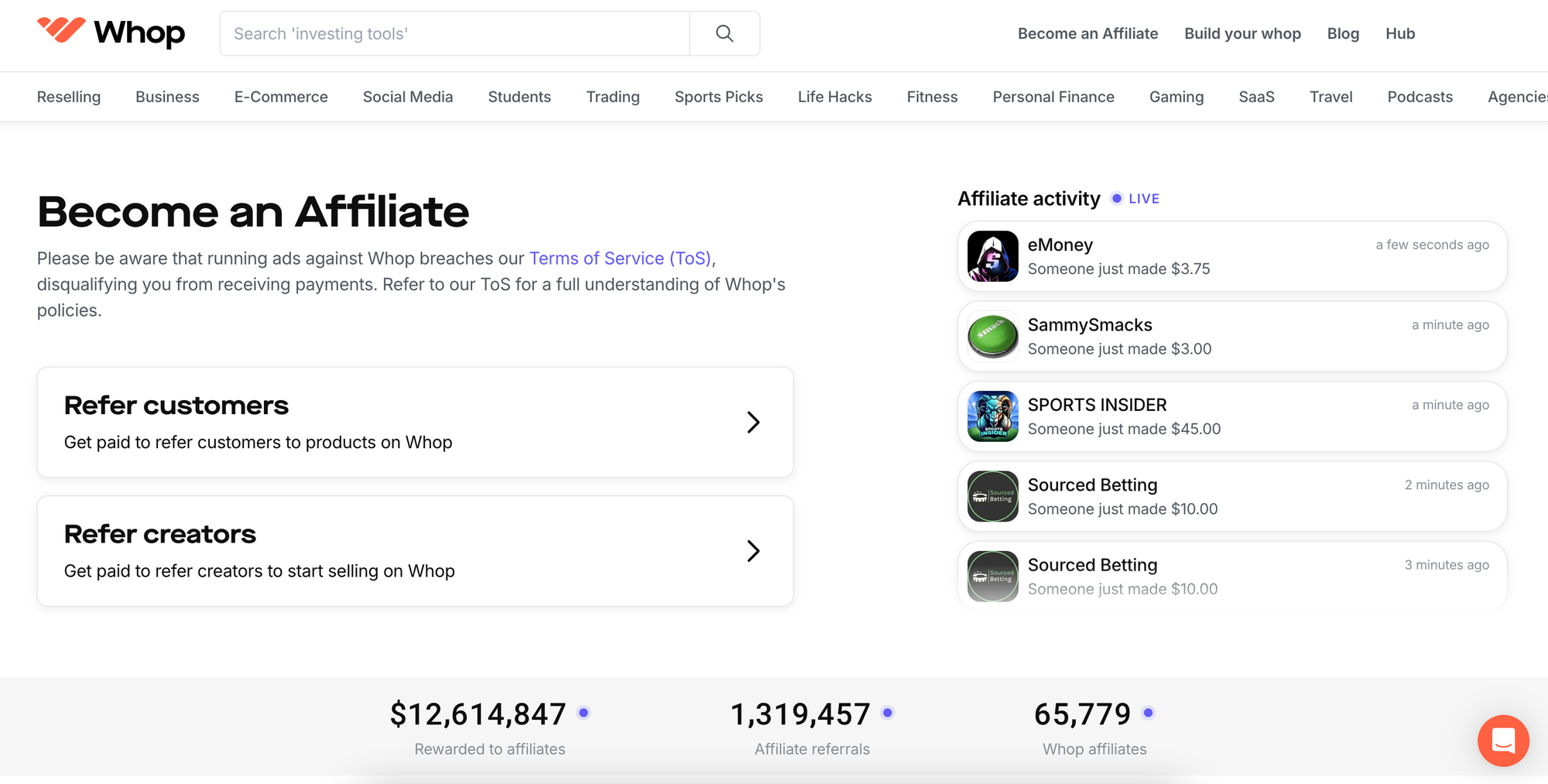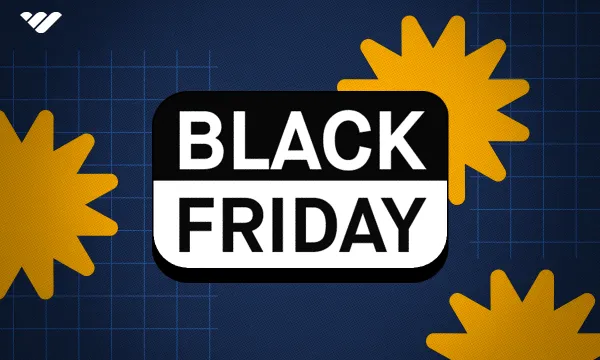Making it big in the world of ecommerce no longer requires a warehouse, dozens of staff members, and a reliable courier. In fact, it doesn’t even require you to have any stock at all.
Affiliate marketing is experiencing a boom, as more people realize they can make money by marketing products rather than selling them. All you have to do is drop a special link in some online content and you’re away.
Well, maybe it’s a bit more complicated than that. Join us as we run through exactly how affiliate marketing works and how you can get going today, for free.
What is Affiliate Marketing?
In short, affiliate marketing is a revenue scheme that involves directing people toward a product and taking a commission when they buy it. It’s essentially marketing another business’ product for them, using links and discount codes.
It is a form of income stream most heavily associated with bloggers and content creators, as they tend to have active audiences. These audiences are also likely to be interested in the products their favorite creators are marketing, as they will be relevant to the content.
Two Types of Affiliate Marketing
Product links
One of the most common affiliate marketing methods is inserting affiliate links into content. These are often found on blogs and websites that produce content for a specific niche.
For example, an arts and crafts blogger may publish an article titled, ‘The 10 Best Paintbrushes’, posting links to buy each brush in the list. They would then receive money for everyone who clicks the link and buys the product.
Discount codes
Influencer culture has paved the way for many affiliate marketers, taking commissions on the products they advertise on Instagram, YouTube, and TikTok. Content creators and influencers are often sent products to review for free and given a discount code for followers to use at the checkout.
How Affiliate Marketing Works
1. Sign up for an affiliate program
The first stage of affiliate marketing is signing up for an affiliate program. There are several sites that offer these, including Amazon, who run its very popular Associates program. However, this program only provides its users with links to Amazon products.
Some programs host affiliate schemes for hundreds, sometimes thousands, of programs under one roof. This gives you a much broader choice of products to market through your content.
Signing up for affiliate programs tends to be straightforward, but not instant. A lot of schemes use application processes and require proof of where you will be hosting your affiliate links and codes.
2. Create your content
Once you have been accepted into an affiliate program, it’s time to start creating the content in which your affiliate links will be found. There are many different forms of content that affiliate marketers create, such as:
- Listicles: Listicles make up a significant portion of affiliate marketing content. They are great for capturing an audience’s attention and give you a platform to showcase individual products and why they are worth buying.
- Case studies: Medium to long-form case studies detailing how a real-life individual benefitted from using a product are effective for generating affiliate sales. You can go into depth about how effective a product is, using facts and emotion to back up your point.
- Reviews: Reviews allow you to hammer home exactly why your audience should buy a certain product. You can list pros and cons, as well as instructions on how to use it, leaving a link to buy at the end.
- Social media posts: It is very common to see someone using and reviewing a product on social media, with a link to buy the product. These videos are incredibly simple, mainly because of time restrictions on the various social media platforms.
- Emails: Sending affiliate links to your email list is an effective method of affiliate marketing. Providing you back the links up with engaging content that keeps the audience on your side, that is. After all, hard selling a product via email doesn’t tend to go down well with subscribers.
- Videos: YouTube is arguably the top online platform in the world, with over one billion hours of content being consumed on the site each day. This makes it a prime host for your affiliate content and links, which you could leave in the description box below the video.
Once your content highlighting a product is completed, it is then time to insert your affiliate links, discount codes, or coupons accordingly.
3. Inserting links and earning money
While most affiliate links work on a pay-per-sale basis, not every scheme works this way. Here are the three different types of affiliate link payment:
1. Per sale: This is the most common form of affiliate link, where you receive commission for every product sold using your link. This is also how it will work if you are offering a discount code for your audience to use at the checkout.
2. Per click: Some affiliate marketing programs will pay marketers a fee for every time somebody clicks on the affiliate link. The fees for this format are usually lower as clicks are more common than purchases.
3. Per lead: With the per lead model, you will receive commission every time someone clicks your link and signs up to a company. They’ll usually have to enter their email address and a password for you to receive a payment.
The Benefits of Affiliate Marketing for Affiliates
If you’ve managed to build an online audience, whether it’s on social media or on your personal website, there’s plenty to gain from affiliate marketing. If you maintain consistency, insert relevant links or codes, it can become a risk-free form of income.
Here are some benefits:
Income source: Inserting affiliate links into your content can generate you a side income, or full-time income, depending on how large your audience is. This income will also work passively, providing the seller doesn’t remove the product from their store.
Scalable income: If you continue to grow your audience, you can scale your affiliate marketing business to a high level. There are no limits to how many links you can insert into your content.
No responsibility: Affiliate marketing is a good alternative to selling your own products, as you are not responsible for the shipping, inventory, or returns. Any issues customers may have with the product will not be traced back to you.
The Benefits of Affiliate Marketing for Businesses
Affiliate marketing may appear as though it mainly caters for those earning commission from it, but it is also profitable for the businesses.
Here’s how:
Cheaper than marketing campaigns: Generating affiliate links and paying commissions is considerably cheaper for businesses than rolling out marketing campaigns. If an affiliate link is used on multiple sites, awareness for the product will naturally increase.
Gaining non-affiliate customers: While a lot of customers will be directed to the product via the affiliate link, it won’t always be the case. There will be a number of customers who make a mental note of it and search it up at a later date. This will void the original affiliate link, meaning the business will have gained a customer without having to pay commission.
Reaching a desired demographic: Most affiliate marketers will operate in a specific niche, targeting content at a community of like-minded readers/viewers. This is ideal for businesses, as their product will land in front of the eyes of people who will be interested in buying it.
Is Affiliate Marketing Worth It?
Pros
- Cost-effective business: Affiliate marketing is unlikely to cost you anything other than your time. There are plenty of places to upload content for free, and accessing affiliate links is unlikely to cost you. Some affiliate sites have paid plans, but if you’re successful, the fee will be swallowed up by profits.
- Easy to get started: One of the greatest strengths of affiliate marketing is how easy it is to get started. You’ll need to complete an application for affiliate sites, but the bar is set pretty low, meaning you’re unlikely to have an issue being approved.
- High potential: Affiliate marketing is rapidly becoming a huge business, with companies seizing the opportunity for easy marketing. As a result, content creators are reaping its rewards.
- Large marketplace: If you choose to start affiliate marketing, you won’t be short of niches to choose from. A huge variety of companies, whether they sell children’s toys or bathroom appliances, are offering affiliate links.
- Passive income potential: There are very few people who wouldn’t find the idea of generating money while you sleep appealing. If you create the right content and reach the right people, this is exactly what affiliate marketing allows you to do.
Cons
- No guarantee of success: There is no guarantee that affiliate marketing will start making you money right away. It mostly works on a commission basis, which requires the sale to be made before you make any money. It usually requires a lot of website traffic to start converting readers into buyers.
- Plenty of competition: As you can imagine, the obvious positives of affiliate marketing have tempted a lot of people to try their hand at it. Competition is fierce, so you’ll have to come up with a way of making your content stand out from the crowd.
- Customers may not use your link: With affiliate marketing, you’ll only make money if your link is used when the customer makes a purchase. If they read your content but decide to search up the product themselves, you won’t make anything from it.
- It will require a lot of time: As mentioned earlier, affiliate marketing is unlikely to cost you anything but your time. Well, it may cost a substantial amount of time. Generating traffic toward your content isn’t easy, especially if you’ve just started, and will require a high level of consistency.
The Best Affiliate Programs for Making Money Online
1. Rakuten Advertising

Rakuten Advertising is one of the oldest affiliate marketing programs in the business, forming an impressive list of famous partners since it began in 2005. However, despite the notability of its partners, Rakuten lacks in options, with around 1000 businesses’ links on the platform.
This may feel like an issue for those operating in a less popular niche. However, if you want access to notable brands such as Kurt Geiger and New Balance, it could be the platform for you.
Pros:
- Lots of famous brand partnerships
- Pays well, depending on the merchant
- Great for beginners
Cons:
- Not a great deal of options
- Not ideal for those operating in more specific niches
2. Amazon Associates

Amazon Associates is one of the most popular and well-subscribed affiliate programs in the world, which is understandable considering the size of its parent company. Because it is owned by Amazon, you can only provide links to Amazon products. This may originally feel like a flaw, but the site’s variety of products is almost endless.
The site offers one highly notable perk too. As well as receiving a commission on the product bought using your link, you’ll receive a commission on everything bought within the same shopping session.
It’s advised that you only join Amazon Associates once you have built an audience though. Amazon will remove you from the platform if you fail to make three sales in the first 180 days.
Pros:
- Huge variety of products to market
- Amazon is good at converting traffic to sales
- Commission received on the customer’s entire shop
Cons:
- If you fail to make three sales within 180 days, you get removed from the platform
- With commissions ranging from 1-4%, you’ll have to sell a lot to make decent money
- Each country pays separately and requires different minimum payment thresholds
3. FlexOffers

FlexOffers allows its users access to over 12,000 different affiliate marketing schemes, housing them all under one digital roof. With both high-end, luxury brands and smaller independent companies advertising their links on the platform, there’s plenty of variety to be found.
It’s completely free to sign up, although it will take 6% of your overall earnings and command a transaction fee when you withdraw money. This is frustrating, but with so many marketing schemes at your fingertips, the platform is worth consideration.
Pros:
- Multiple affiliate schemes to choose from
- Easy to keep track of all your affiliate programs
- Great for beginners
Cons:
- Payments take two months to arrive
- FlexOffers takes 6% of all earnings, plus transaction fees
- Minimum payment thresholds for withdrawal are high
Affiliate Marketing with Whop: The Easy Way to Earn Passive Income

If you’re ready to start your journey in affiliate marketing, Whop has got you covered. Whop’s affiliate program pays you for referring others to products hosted on the Whop marketplace.
With a variety of products spanning from digital coloring books to sports betting communities, Whop has something to suit every affiliate marketer’s niche. We’ll also provide you with detailed statistics and the ability to earn recurring payments for your referrals.
Don’t delay! Become a Whop Affiliate today and start earning a risk-free, scalable side income without leaving your home.





